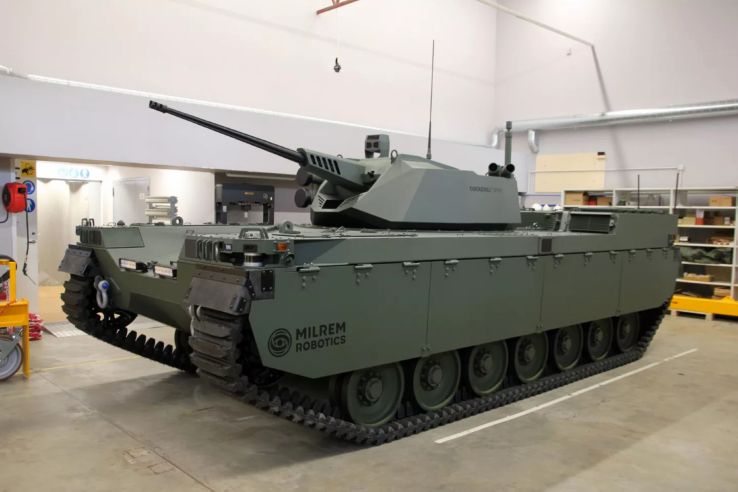Falangi
Kenraali
Milrem Robotics unveils Type-X RCV with CPWS II turret

Milrem Robotics unveils Type-X RCV with CPWS II turret
Estonia’s Milrem Robotics has integrated the John Cockerill Defence Cockerill Protected Weapons Station Generation II (CPWS II) to its in-development Type-X robotic...
www.janes.com
Estonia’s Milrem Robotics has integrated the John Cockerill Defence Cockerill Protected Weapons Station Generation II (CPWS II) to its in-development Type-X robotic combat vehicle (RCV), the company announced on 15 June.
“CPWS II is a remotely controlled and unmanned turret that suits robotic vehicles very well,” Kuldar Väärsi, Milrem Robotics’ CEO, told Janes .
Milrem Robotics has integrated the Cockerill Protected Weapons Station Generation II to its Type-X robotic combat vehicle. (Milrem Robotics)
“Also, turrets with low weight and height, but still high firepower are preferred,” Väärsi added. “Type-X is an extreme mobility platform and the turret should be capable of supporting that.”
The CPWS II is a remotely operated, low profile, lightweight turret with a configurable hatch opening enabling the crew to adjust the hatch position to suit mission requirements. The hatch provides flexibility to the level of protection required in addition to rapid reloading from the outside as well as maintenance. It can be configured in four different positions: fully closed, elevated, open, and removed.
Primary armament includes the Northrop Grumman Innovation Systems 25 mm M242, Nexter Systems 25 mm 25 M 811, or the Rheinmetall Air Defence 25 mm KBA. These are dual-feed armaments, which can handle two ammunition natures.
At the heavier end of the scale is the Northrop Grumman Innovation Systems 30 mm M230 LF low-recoil weapon. Other larger-calibre alternative weapons include the Russian 30 mm 2A72 or the 30 mm ZTM-1 for Ukrainian dual-feed weapons. Ammunition supply depends on the type of weapon but is typically up to 150 rounds of 25 mm ready-use ammunition in two magazines.



